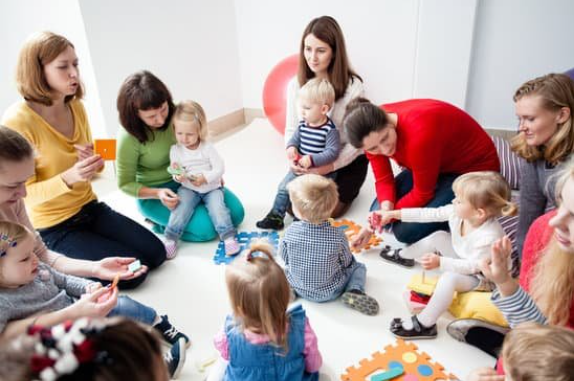
Conversations with the Kids: Mental Health Awareness
Shelby KretzShare
By Allison Banta
We try to be very proactive in our approach to sticky subjects. I’ll be the first to admit though— the conversation about mental health snuck up on me. When the COVID pandemic hit we had very little framework in place for that conversation, and suddenly, we needed it.
Right. Now.
One day we were seeing friends and family, prepping for dance recitals, and making spring break plans. The very next, school was closed, friends were quarantined, and grandparents were only accessible via facetime or zoom. Transitions were abrupt, everything was different and a bit scary, and many of our usual support systems were unavailable. For my kids (and a whole host of others), meltdowns and frustration became more frequent, motivation was low, and fuses were short. We needed to begin a conversation, and I was a bit lost. When that happens, I stick with the three rules our family therapist has given me in the past:
- First, make it age appropriate.
- Second, make it on-going – you want a conversation, not a lecture.
- Third, get curious! Really listen. Kids want to feel heard, just like we do.
Since my kids were preschool and second grade at the time, I waited for an opportunity where we were all together and the topic didn’t feel forced. That came in the form of a 500-piece dog puzzle at the kitchen table. We were having a great time– and then came the meltdown, seemingly out of nowhere. A piece wouldn’t fit, and an argument ensued. Frustration, anger, and sadness just boiled over, right onto the kitchen table, scattering emotions and puzzle pieces alike.
We left the scattered puzzle where it was and cuddled up on the couch.
“You guys seem like you’re feeling really upset,” I began. “I’m not sure if it’s about the puzzle, or maybe about something else? Would anyone like to tell me how they’re feeling?”
They were slow to share. At first, they just talked about the puzzle argument. Then the dam burst wide open. “I just miss my friends!” one yelled. “And my school!” the other chimed in. “It’s just so boring and flust-er-ating! And we can’t even do fun things! I hate this! I don’t want to stay home with only us. These germs are horrible.”
They took turns shouting – anger, sadness, fear, frustration, boredom – their emotions spanned the spectrum. I tried to simply listen and validate the way they were feeling. I told them that grownups were having a hard time too, and that part of being a human is feeling a whole big range of things, and that it was ok to feel those ways. They seemed surprised.
“Really?” they asked. “Grownups are bored with this too?”
“Oh yes” I told them. “Grownups are bored and frustrated and worried sometimes too.”
We snuggled up, and they were quiet for a bit. Then one piped up in a very soft voice, eyes downcast; “But what if... Well. I think this will just be all the days! What if it lasts forever, Mom? I miss my friends so much.”
I hugged them tight. We talked about how sometimes hard things do happen, but it gets better. Emotions change. Hard times are just a normal part of life, and there are people who will help and support us through them: our parents, grandparents, teachers, doctors, counselors, neighbors, aunts, uncles, and friends. We spent some time naming people who support us. We talked about past hard times, and how they felt, and how the hard feelings eventually passed. Recalling these things was really helpful for both of them. It gave us concrete examples of how feelings come and go and reminded them that nothing lasts forever – even when it feels like it will.
They both seemed relieved. One bounced off to play, and the other stayed a minute, helping me pick up the scattered puzzle. “Mom?” she asked. “Will you tell me again? Will you remind me?”
“Every time you need me to,” I said.
And so, we have. That was just the beginning of our conversation about mental health, and we have continued it throughout the past year, picking up tips and help from experts along the way. We try to talk about mental health the way we talk about any other health related topic, like diabetes or a broken arm. We talk about things we can do to be mentally healthy – things like sleep, healthy foods, and moving our bodies. We use lots of books to help discuss and label emotions. We practice what they’ve dubbed “calmness breaths,” and we also have a calm-down bag in a special spot, full of sensory toys that we use together when they just need an adult to help them regulate after big feelings.
Your conversation may look different. Maybe your kids are a bit older, or a bit younger. Maybe they need more information. Maybe they are ready to talk in more depth. It’s so easy to get overwhelmed and avoid the conversation altogether, but remember – hard things are normal, and feelings always change. Just keep it simple: keep it age-appropriate, on-going, and be curious.
May is Mental Health Awareness Month. We’ve got this, grownups. Let’s start the conversation.
For more ways to bring social justice to the little ones in your life, sign up for the LJL newsletter here.
